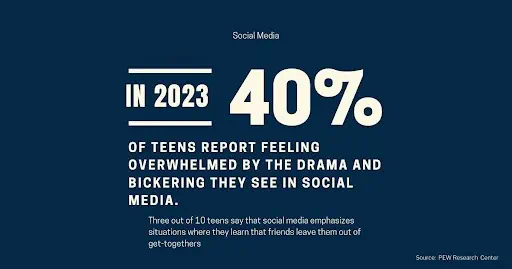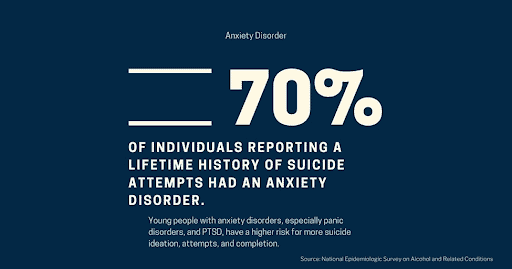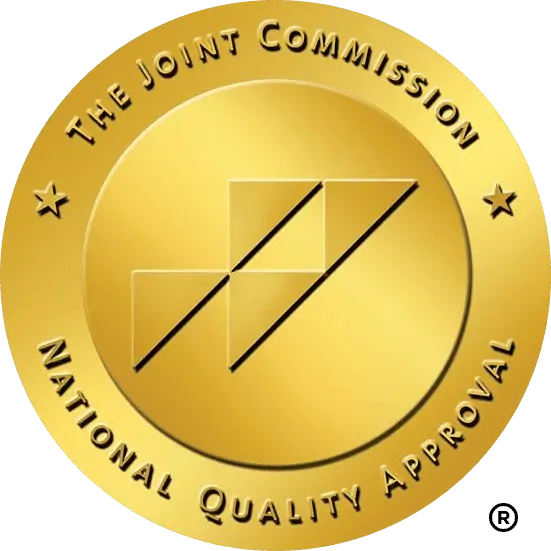If it seems to you that your teen is in constant emotional turmoil, that’s because they are. Parents can think of teenage emotions as a rollercoaster ride for everybody involved.
Understanding the Rollercoaster of Emotions
The Climb: The ride begins with a slow but steady climb up a steep hill. You can do nothing but sit and wait for the moment the descent starts. Once you reach the top of the hill, the rollercoaster car tips downward and immediately accelerate.
The Decent: Adolescence is a terrifying and rough ride that you have no control over. There’s nothing you can do to stop it, even if you want to. You have no choice but to let it happen.
Embracing the Ride: Once you reach the bottom, you take a deep breath and calm down–only to realize you are making that climb to the top of the roller coaster again and again and again.
Although parents understand that brain and hormonal changes are the fundamental causes of teen angst and moodiness, it doesn’t make it easier for parents and teens to cope with the unpredictability of adolescent mental health conditions.
All parents of adolescents will say that they noticed a distinct behavioral shift in important aspects of their child’s life once they started middle school. While some teens can effectively manage school stress, navigate peer pressure complications, and cope productively with difficult emotions, self-esteem, and self-identity issues, other teens may need the assistance of counseling services in school and parents need to start seeking treatment.
For adolescents diagnosed with mental health conditions or severely troubled teens, often counseling or outpatient treatment is not enough. It then becomes necessary for parents to explore residential therapy options for adolescents.
Recognizing Teen Angst
The Middle School Shift
For many adolescents, the beginning of the school year is more difficult, especially when attending new schools. For those with angst, depression, or anxiety, the social pressures can aggravate their mental health condition and leave them feeling overwhelmed.
This is particularly true for students beginning middle and high school. As they transition into a new stage in their academic life, the need to make new friends, fit in and the peer pressure worsens their insecurities. Often finding new peers that are experimenting with drugs, alcohol, or substance use and are involved in other high-risk behaviors.
Trying to figure out and understand who they are, making new friends, new romantic relationships, and forming a new identity is hard. The social complexity and range of emotions resulting from all of these new experiences increase self-doubt and fear and worsen emotional conditions like teen depression and anxiety disorders.
What is Teen Angst?
Understanding Teen Angst
Teen Angst is the feelings of anguish felt by teenagers and young people (13–19-year-olds), including anxiety, apprehension, sadness, confusion, frustration, and insecurity. The term “teen angst” encapsulates all the typical emotional struggles during this developmental phase as children grapple with changes in their bodies, minds, and environments.
These feelings are emotional turmoil that stems from the stress of identity formation, social pressures, academic expectations, hormonal changes, and the process of transitioning from childhood to adulthood.
Parents can struggle to differentiate between teenage angst and depression or anxiety. When your child has a mental health condition, it can be even harder to know if the behavioral or emotional changes are related to teen angst or another complex teen mental health disorder.
Identifying the Signs
Adolescents going through angst may exhibit mood swings, irritability, a sense of being misunderstood, and a tendency to question their self-worth and purpose.
Look for signs like:
- behavioral changes
- mood swings
- increased irritability
- isolation
- headaches
- stomachaches
- changes in eating
- changes in sleeping habits.
Every teen is different, and some may not show noticeable warning signs. However, continuing to talk with your teen and paying attention to any changes or new behaviors will help you identify potential issues.
When to Seek Help for Teen Angst
Prolonged, excessive, or persistent teenage angst might indicate underlying mental health issues that require more supportive environments. For these cases it becomes crucial to consult with guidance and academic counselors as well as your pediatrician.
12 Ways Parents Can Deal with Teenage Angst
- Foster Strong Relationships: Regulars communication fosters trust between you and your teen.
- Understand and Empathize: Provide a support network and empathy for their struggles.
- Encourage Wise Decisions: Help them make decisions that protect their well-being.
- Be Aware of Pressures: Acknowledge academic, peer-social, and emotional pressures.
- Prioritize Activities: Help them set realistic goals and good study habits.
- Promote Balance: Encourage a healthy balance between study, sports, and social life.
- Healthy Habits: Emphasize healthy sleep, eating, and device usage.
- Open Discussions: Engage in discussions about their concerns and needs.
- Guide Through Challenges: Be there to guide them through difficult moments.
- Show Empathy: Display empathy and provide the necessary support.
- Communicate with Teachers: Collaborate with teachers for a supportive educational environment.
- Seek Professional Help: Reach out to professionals when necessary.
The Impact of Social Media on Teenage Angst and Mental Health
The Digital Pressure
Teens today are under much more pressure to be popular, attractive, and successful than teens 20 years ago. Much of this school stress is exacerbated by the psychological impact of social media.
When teens were surveyed by Pew Research, the majority of respondents said that they had positive experiences when using TikTok, Instagram, YouTube, and Facebook.
The Positive Side:
Teens reported they felt more connected to peers, liked the idea of having somewhere to indulge their creativity, and felt better knowing they could receive immediate support from peers when going through “tough times.”
The Flip Side:
About 40 percent of teens report feeling overwhelmed by the drama and bickering they see on social media. Three out of 10 teens say that social media emphasizes situations where they learn that friends leave them out of get-togethers.
There is also the pressure to post pictures and comments that garner thousands of “likes.” Also, posting something that does not get the number of “likes” their friends are getting on posts is one of the worst things that can happen to teens who already feel left out and unpopular.
Navigating the Impact:
Although you may find it difficult to understand how and why these things are so important to your teen, just realize that they are profoundly vital to them and comprise much of how your teen views their self-worth and self-identity.
With social media now entrenched in adolescent and adult life, parents can only limit the amount of time their kids spend on social media, but they cannot take away their child’s access to social media.
In fact, research indicates that severely limiting or banning social media from teens can be psychologically harmful to vulnerable teenagers, especially those that identify as LGBTQ+.

Teen Angst vs. Anxiety: What’s the Difference?
Teen angst and anxiety are two terms that are often used interchangeably, but they are actually quite different. Both are common during the teenage years but manifest in a different way and need additional support and treatment.
Building on the prior explanation above, teenage angst refers to the emotional upheaval, intense confusion, and uncertainty felt by adolescents. Often the symptoms of anxiety and teen angst overlap, causing confusion for parents. Now, let’s explore the differences.
How is Anxiety Different from Teen Angst?
Anxiety is a clinical mental health condition that causes excessive and persistent worry, fear, apprehension, avoidance behaviors, and obsessive thoughts that interfere with daily activities. These symptoms go beyond typical teenage emotional experiences and negatively affect their daily life.
The Physical Symptoms of Teen Anxiety
Generalized anxiety disorder, panic disorder, social anxiety, and obsessive-compulsive disorder are among the ways anxiety becomes apparent. A child dealing with anxiety will likely have other physical symptoms like heart palpitations, sweating, and breathing challenges, often leading to the onset of panic attacks. Overwhelming anxiety is debilitating and significantly influences the teen’s quality of life.(1)
Among individuals reporting a lifetime history of suicide attempts, over 70% had an anxiety disorder. (2)
Treatment for anxiety disorders is very different than treating teenage angst. Treating anxiety disorders necessitates an individualized approach, and to prevent comorbidities, early intervention is crucial. If your child exhibits signs of an anxiety disorder, seeking professional help promptly is of utmost importance.

When Should Parents Consider Seeking Professional Help for Teens?
Recognizing the Signs
If your teenager behaves or is experiencing these signs persistently, it is time to seek professional help:
- Moodiness develops into a continual state of sadness, depression, and hopelessness.
- Fails to attend school regularly/truancy issues that cause the teen to be suspended or even sent to juvenile court.
- Shows signs of self-harming behaviors (tiny cuts on wrists or arms; wears long sleeves in hot weather to hide cuts; parents find razorblades in their teen’s room)
- Threatens suicide over minor problems with parents or peers.
- Stops socializing with friends/self-isolates for long periods.
- Spends nearly all their time on social media.
- Starts using drugs and/or alcohol.
- Rarely responds when asked a question or spoken to by parents and siblings.
- Stops engaging in activities they used to enjoy.
- Begins hanging out with a different group of friends who are known to be risk-takers and troublemakers.
Acting Promptly
If your teen has moved on from teenage emotions and drama you can handle, to a nonstop torrent of severe emotional turmoil that you cannot, then learning more about teen mental health conditions and available treatments is crucial to your teens well-being.
Understanding Mental Health Treatment Options: What is the Best Therapy for Adolescents?
Teen Angst, Depression or Anxiety Treatment
School counselors provide stress management techniques for students who suffer from school stress due to peer pressure, academic struggles, bullying, and other minor psychological problems. They may also refer parents to an outpatient mental health services center or an adolescent mental health specialist.
Parents can further help their troubled teens by collaborating with teachers and requesting an open line of communication with them. Since most working parents can’t spend as much time with their kids as teachers do during the day, educational instructors and associated personnel can often provide better insight into the teen’s emotional and mental state.
In addition, parents might consider researching self-care practices for teenagers and talking to their teens about these practices:
- Improve sleep quality by sticking to a regular sleep schedule and not using their cell phones an hour before bed.
- Developing a creative outlet they enjoy, such as drawing, journaling, painting, or photography.
- Fostering a dog or cat is a wonderful way for teens to feel good about themselves and for the experience of taking care of a lovable pet.
- Volunteering to do something for their community. Most towns and cities always have events happening that need volunteers to set up chairs, booths, tents, etc.
- Going for a quiet walk in a park with their best friend, their pet, or a sibling
Outpatient treatment for troubled teens involves different types of therapy that help teens discover why they are experiencing such emotional turmoil.
Cognitive behavioral therapy (CBT) is a highly effective therapy that focuses on eliminating negative thought patterns that cause feelings of hopelessness, anxiety, fear, and sadness.
CBT combined with family therapy is another option that helps troubled teenagers by bringing family members into each session. Mediated by a licensed family therapist, sessions are designed to improve a teen’s emotional stability and awareness by clarifying their role in the family.
A family therapist is also trained to streamline the ability of kids to communicate thoughts and emotions they may have been hesitant to reveal in the past. Parents will also benefit by listening to their teens speak openly and honestly about deep-seated feelings they may not have considered.
If you suspect your teen struggles with anxiety, depression, or angst, and you’ve tried many of these recommendations and they are not working, it is time to look at residential treatment. Talk to us about your teen’s mental health problems and ask for a personalized and holistic plan to help your teenager start to heal. Remember, seeking help is a sign of strength and can make a world of difference for your teen’s well-being.
Get Accepted Or Pre-qualify
FAST SECURE ONLINE ACCEPTANCE FORM
Other Common Emotional Disorders for Teens
Teens today often face multiple emotional disorders at once. This is known as comorbidities or dual diagnosis. The following list describes the most common emotional disorders for teens:
- Depression disorder:Teen depression is a mental health disorder characterized by persistent sadness, loss of interest in activities, and feelings of worthlessness and hopelessness. It can affect how your teen thinks, feels, and behaves, impacting academic and social performance.
- Anxiety disorder:Anxiety is a natural reaction to stress and can present in various ways, including social anxiety, separation anxiety, panic disorder, and generalized anxiety. Teen anxiety can negatively affect academics, relationships, and overall well-being.
– Attention Deficit Hyperactivity Disorder (ADHD): ADHD is an emotional disorder that can make it difficult for adolescents to focus and follow through with tasks. Symptoms of ADHD include impulsive behaviors, difficulty paying attention, and hyperactivity, which can impact academic performance and socializing abilities.
- Bipolar disorder:Bipolar disorder is a mood disorder that affects an estimated 2.5% of adolescents. Teens with bipolar may experience extreme mood swings, from depressive lows to manic highs, which can significantly impact academics, social relationships, and functioning.
- Obsessive-compulsive disorder (OCD):Obsessive-Compulsive Disorder is an anxiety disorder characterized by intrusive, obsessive thoughts and compulsions that can become time-consuming and interfere with daily functioning. For teenagers, OCD can interfere with academic performance and social relationships.
- Eating disorders:Eating disorders, such as Anorexia Nervosa, Bulimia Nervosa, and Binge Eating Disorder, affect both male and female teenagers. Eating disorders are complex and often require professional treatment. Warning signs may include severe weight loss, food or weight obsession, and body image preoccupation.
- Post-traumatic stress disorder (PTSD):PTSD arises following exposure to traumatic events such as physical or sexual abuse, domestic violence, natural disasters, or car accidents. Symptoms may include anxiety, nightmares, flashbacks, and avoidance of stimuli that may trigger trauma memories. Teenagers with PTSD may struggle with academic performance, social relationships, and self-worth.
- Substance Abuse:Substance abuse can have significant mental health implications, including the development of addiction, depression, anxiety, and other mental health disorders. Teenagers may be more prone to experiment with substances and develop dependency. Watch for warning signs such as sudden changes in friends, falling grades, and unexplained behavioral changes.
When these emotional and mental health problems are left untreated, they can negatively affect a teen’s mental and physical health.
At Turning Winds, we understand the pain of watching your teen suffer and parents feeling powerless. We also know that there is hope. Every day we witness teens start to heal, grow and mature into more confident and healthier people. Our team of experts is dedicated to providing quality clinical mental health care that positively impacts your teen’s academics, social relationships, and self-esteem. Contact us online for more information, or call us at 800-845-1380. If your call isn’t answered personally, one of us will get back to you as soon as possible.
Sources:
(1 & 2)Nepon J, Belik SL, Bolton J, Sareen J. The relationship between anxiety disorders and suicide attempts: findings from the National Epidemiologic Survey on Alcohol and Related Conditions. Depress Anxiety. 2010 Sep;27(9):791-8. doi: 10.1002/da.20674. PMID: 20217852; PMCID: PMC2940247.









